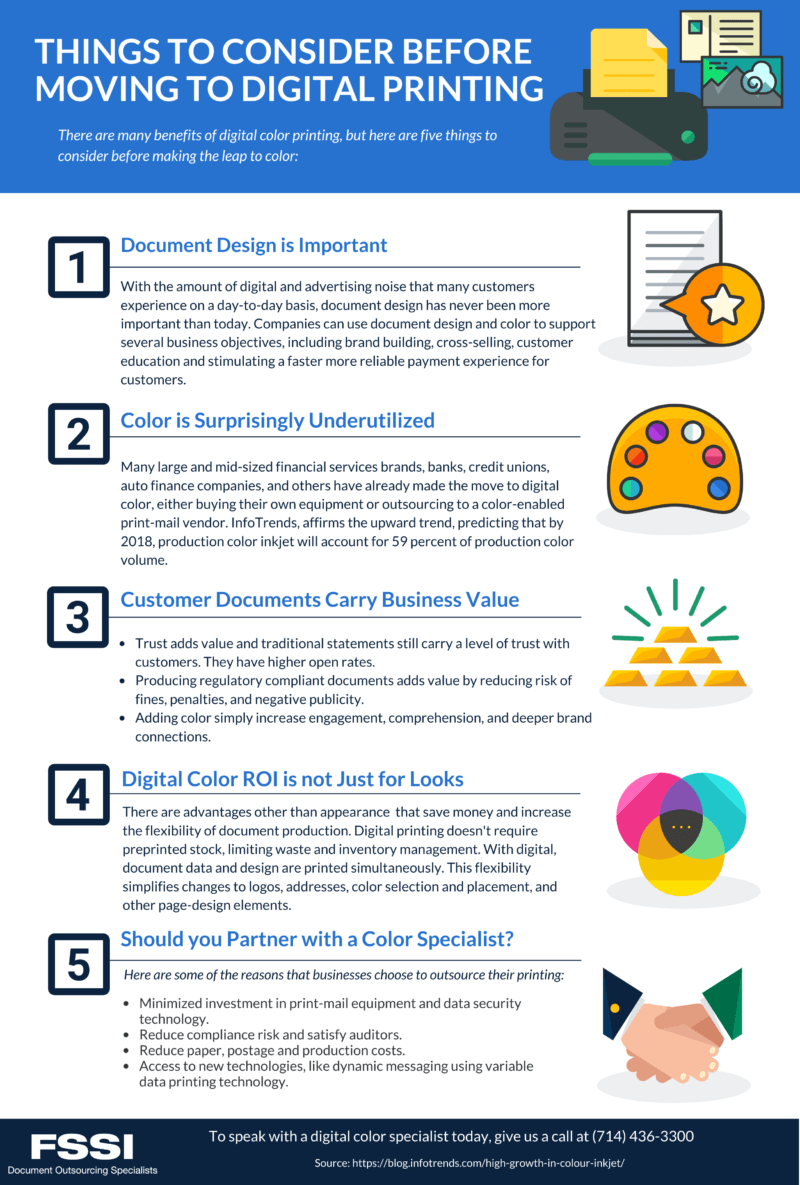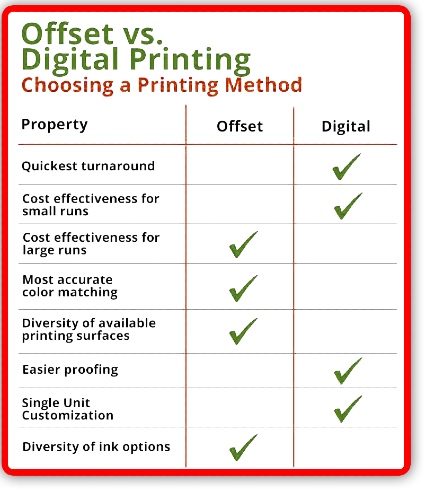Top Guidelines Of Digital Printing
Top Guidelines Of Digital Printing
Blog Article
Excitement About Digital Printing
Table of ContentsThe Only Guide to Digital PrintingNot known Incorrect Statements About Digital Printing More About Digital PrintingThe Greatest Guide To Digital PrintingThe Definitive Guide for Digital Printing9 Easy Facts About Digital Printing Explained
Variable information printing, such as direct mail with personalized codes and addresses, is preferably suited for electronic printing. Digital fast printing just needs four actions of style, review, printing and binding to obtain everything done. Digital fast printing has an unequaled advantage: print on need.According to PMMI, electronic printing permits brand names and manufacturers to respond swiftly to consumer needs while boosting the supply chain, reducing warehousing cost and waste, and appreciating faster time to market. That all audios great, but exactly how does this innovation do all that? The major differentiator of these innovations is that there are no set up costs and no plates with electronic printing.
Digital Printing Fundamentals Explained
This results in quicker turn-around time and decreases cost when making use of digital printing.
Quick production means obtaining your item to market quicker. It also means it's much easier and faster to make changes in the future, when you transform a dish, include a SKU, or produce seasonal packaging. Digital printing is highly adaptable, so it's very easy to make modifications to the bundle design swiftly. Everything returns to home plates.
Much more supply can imply more waste down the road. With traditional printing techniques, short-run printing is simply not feasible. Because a great design can make or break your item, electronic printing regularly develops top quality, clear and vivid graphics each time. Digital printing on flexible bags includes the brilliant, lively, and accurate graphics that practically beckon consumers to connect and touch them.
Digital printing is the process of printing digital-based pictures straight onto a range of media substratums. There is no demand for a printing plate, unlike with countered printing. Digital data such as PDFs or desktop publishing files can be sent out straight to the electronic printing press to publish on paper, photo paper, canvas, fabric, synthetics, cardstock and various other substratums.
Not known Details About Digital Printing
According to PMMI, digital printing allows brand names and makers to react promptly to customer needs while improving the supply chain, decreasing warehousing cost and waste, and delighting in faster time to market. That all audios excellent, however how does this innovation do all that? The major differentiator of these technologies is that there are no set-up costs and no plates with digital printing.
This results in quicker turnaround time and lowers expense when making use of electronic printing.

The Of Digital Printing
With conventional printing methods, short-run printing is simply not possible. Because a wonderful layout can make or damage your product, electronic printing consistently develops high-grade, clear and vivid graphics each time.

According to PMMI, digital printing permits brand names and manufacturers to react rapidly to customer demands while enhancing the supply chain, decreasing warehousing cost and waste, and enjoying faster time to market. That all sounds terrific, but just Going Here how does this technology do all that? The significant differentiator of these modern technologies is that there are no set-up costs and no plates with electronic printing.
The 9-Minute Rule for Digital Printing
According to Wikipedia, the biggest distinction between digital printing and conventional techniques such as lithography, flexography, gravure, or letterpress is that there is no demand to replace printing plates in electronic printing, whereas in these analog printing techniques home plates are consistently changed. This results in quicker turn-around time and decreases cost when utilizing electronic printing.
Rapid production indicates obtaining your item to market much faster. It also implies it's less complicated and faster to make changes later on, when you alter a recipe, add a SKU, or produce seasonal packaging. Digital printing is extremely adaptable, so it's very easy to make adjustments to the package style swiftly. Everything goes back to home plates.

The 45-Second Trick For Digital Printing
Digital printing is the procedure of printing digital-based photos directly onto a selection of media substrates. There is no need for a printing plate, unlike with countered printing. Digital files such as PDFs or desktop computer publishing documents can be sent out directly to the electronic printing press to publish on paper, picture paper, canvas, textile, synthetics, cardstock and other substratums.
Report this page